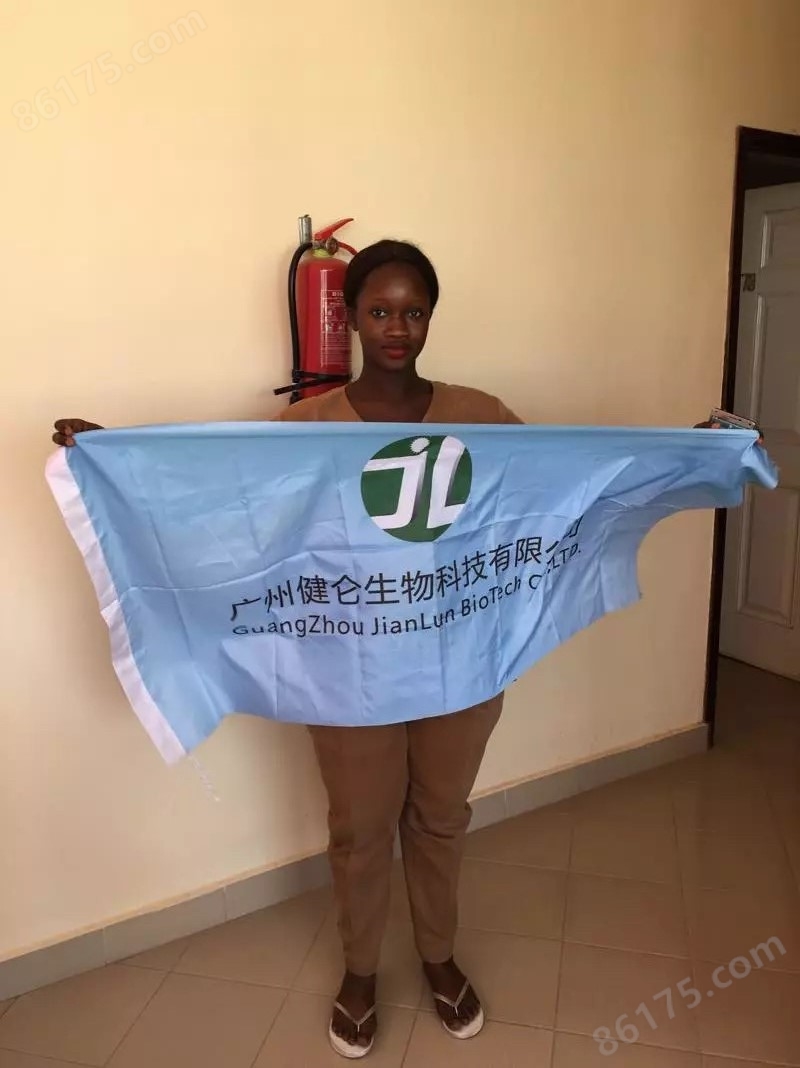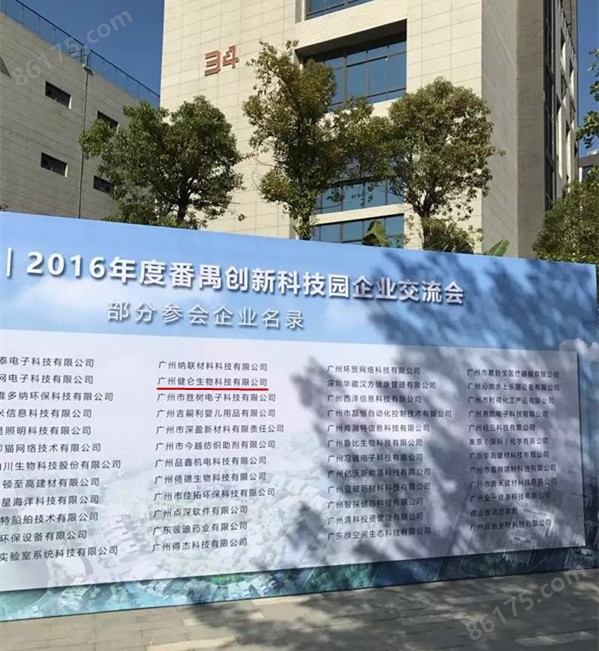其他品牌 品牌
代理商厂商性质
广州市所在地
Cellabs热带病快速检测试剂
广州健仑生物科技有限公司
广州健仑长期供应各种生物原料,主要代理品牌:美国Seracare、西班牙Certest、美国Fuller、美国NOVABIOS、 Cellabs等等。
Cellabs公司是一个的生物技术公司,总部位于澳大利亚悉尼。专门研发与生产针对热带传染性疾病的免疫诊断试剂盒。其产品40多个国家和地区。1998年,Cellabs收购TropBio公司,进一步巩固其在研制热带传染病、寄生虫诊断试剂方面的位置。
Cellabs热带病快速检测试剂
该公司的Crypto/Giardia Cel IFA是国标*推荐的两虫检测IFA染色试剂、Crypto Cel Antibody Reagent是UK DWI水质安全评估检测的*抗体。
主要产品包括:隐孢子虫诊断试剂,贾第虫诊断试剂,疟疾诊断试剂,衣原体检测试剂,丝虫诊断试剂,锥虫诊断试剂等。
广州健仑生物科技有限公司与cellabs达成代理协议,欢迎广大用户咨询订购。
我司还提供其它进口或国产试剂盒:登革热、疟疾、流感、A链球菌、合胞病毒、腮病毒、乙脑、寨卡、黄热病、基孔肯雅热、克锥虫病、违禁品滥用、肺炎球菌、军团菌、化妆品检测、食品安全检测等试剂盒以及日本生研细菌分型诊断血清、德国SiFin诊断血清、丹麦SSI诊断血清等产品。
欢迎咨询
欢迎咨询2042552662
【Seracare产品介绍】
货号 | 产品名称 | 产品描述 | 规格 | |
免疫荧光试剂盒(IFA kit) | ||||
KR1 | Crypto Cel | 隐孢子虫(Cryptosporidium)间接免疫荧光检测试剂 | 50 Test | |
KR2 | Crypto/Giardia Cel | 隐孢子虫&贾第虫(Cryptosporidium & Giardia)间接免疫荧光检测试剂 | 50 Test | |
KG1 | Giardia Cel | 贾第虫(Giardia)间接免疫荧光检测试剂 | 50 Test | |
KC1 | Chlamydia Cel | 沙眼衣原体(Chlamydia trachomatis)间接免疫荧光检测试剂 | 50 Test | |
KC2 | Chlamydia Cel LPS | 衣原体 lipopolysaccharide (LPS)间接免疫荧光检测试剂 | 50 Test | |
KC3 | Chlamydia Cel Pn | 肺炎衣原体(Chlamydia pneumoniae)间接免疫荧光检测试剂 | 50 Test | |
KP1 | Pneumo Cel | 卡氏肺孢子虫(Pneumocystis carinii)间接免疫荧光检测试剂 | 50 Test | |
KP2 | Pneumo Cel Indirect | 卡氏肺孢子虫( Pneumocystis carinii)间接免疫荧光检测试剂 | 50 Test | |
酶免试剂盒 ELISA kit | ||||
KG2 | Giardia CELISA | 贾第虫(Giardia)ELISA kit | 96 Test | |
KE1 | Entamoeba CELISA Path | 溶组织内阿米巴(Entamoeba histolytica) ELISA kit | 96 Test | |
KF1 & KF2 | Filariasis CELISA | 班氏丝虫(Wuchereria bancrofti ) ELISA kit |
| |
KM2 | Malaria Antigen (HRP2) CELISA | 恶性疟原虫(Plasmodium falciparum) 抗原 ELISA kit | 192 Test | |
KMC3 | Pan Malaria Antibody CELISA | 间日、三日、恶性及卵形疟疾(Malaria)ELISA IgG kit | 192 Test | |
KT2 | T. cruzi IgG CELISA | 克氏锥虫(Trypanosoma cruzi) ELISA IgG kit | 192 Test | |
KT3 | Toxocara IgG CELISA | 弓首线虫(Toxocara canis) ELISA IgG kit | 192 Test | |
KF3 | Filariasis Ab (Bm14) CELISA | 淋巴丝虫病(lymphatic filariasis) ELISA IgG kit | 480 Test | |
KM7 | Quantimal™ pLDH Malaria CELISA | 疟疾pLDH抗体检测 ELISA kit | 96 Test | |

【公司名称】 广州健仑生物科技有限公司
【】 杨永汉
【】
【腾讯 】 2042552662
【公司地址】 广州清华科技园创新基地番禺石楼镇创启路63号二期2幢101-3室
【企业文化】



但该区也是我国降水量zui多,暴雨zui频繁,强度zui大的地区。特大暴雨的出现,不仅大大减小了降水的有效性,也严重危害了山区及其下游地区的农业生产。此外,低温冻害、寒害、冰雹以及高山区的雪害在本区也屡见不鲜,给山区农业生产造成了不同程度的危害。
亚热带丘陵山地气候资源的开发利用和保护应结合本区农业自然资源的合理利用,大力发展以林为主,农林牧副渔综合经营的商品生产。丘陵山区是森林立身之处,合理开发利用和治理丘陵山区,可以改善生态环境,减少旱涝灾害,促使生态系统的良性循环。具体意见如下:
增加投入发展立体农业 当前丘陵山区的农业生产仍处于广种薄收的状态,低产田,低产园(如桔园,茶园等),低产林(如油茶林、油桐林、杉木林等)占很大的比例,不仅浪费了宝贵的光、热、水和土地资源,而且造成水土流失,生态环境恶化。产生粗放经营的根本原因是经济、文化落后,缺乏物资(如化肥、农药、机械、能源等)投入和科学技术的引进。因此,大幅度增加对丘陵山区的物资投入,促使科技进山,是逐步实现集约化经营的必要条件。
丘陵山区的地貌特征是山地多、耕地少。当前丘陵山区的农业主要集中在山间河谷的少数耕地上,而大量的山坡地没有得到合理利用,尤其是坡度为25°以下的缓坡地具有发展经济林的良好条件,应重点开发利用,并应根据各种条件,发展果、茶、桑及用材林等。针对山区气候特点,布局山区多层次的立体农业,大力发展多种经营,维护和改善山区生态环境,以获得较理想的经济效益和生态效益。
下层(海拔300~400m以下)主要以种植业为主,在保证粮食稳步增长,自给有余的前提下,扩大经济作物面积,适当发展亚热带经济林果,大力发展薪炭林,积极开发草食畜禽和水产养殖,提高农业气候资源利用率。
中层(海拔400~800m)可在保证粮食自给或基本自给的前提下,大力发展经济林和用材林,开发名、特、优农产品,利用草山、草坡发展草食畜禽。交通方便,离城市较近的山区,可利用夏季凉爽气候种植番茄,甜椒,萝卜等蔬菜作物,充分发挥山区气候资源优势。
However, this area is also the region with the most precipitation, the most frequent heavy rain, and the highest intensity. The emergence of heavy rainstorm not only greatly reduced the effectiveness of precipitation, but also seriously endangered the agricultural production in the mountainous areas and downstream areas. In addition, low-temperature frost damage, cold damage, hail storms and snow damage in high mountain areas are also common in this area, causing varying degrees of damage to agricultural production in mountain areas.
The development, utilization and protection of the climate resources in the subtropical hilly and mountainous regions should be combined with the rational use of agricultural natural resources in the region, and the development of forest-based, comprehensive production of agricultural, forestry, animal husbandry, and animal husbandry should be vigorously promoted. The hills and mountains are the places where forests stand. Reasonable development and utilization and management of hilly and mountainous areas can improve the ecological environment, reduce droughts and floods, and promote a virtuous circle of ecosystems. The specific comments are as follows:
Increase investment in the development of three-dimensional agriculture The current agricultural production in hilly areas is still in a state of wide variety and low income. Low-yielding fields, low-yielding gardens (such as orange orchards, tea gardens, etc.), and low-yielding forests (such as camellia forest, tung forest, fir forest, etc.) account for a large proportion It not only wastes valuable light, heat, water, and land resources, but also causes soil erosion and deterioration of the ecological environment. The root cause of extensive management is the economic and cultural backwardness, the lack of inputs (such as fertilizers, pesticides, machinery, energy, etc.), and the introduction of science and technology. Therefore, the substantial increase in investment in material resources in the hilly and mountainous areas and the promotion of science and technology into the mountains are necessary conditions for the gradual realization of intensive operations.
The geomorphological features of hilly and mountainous regions are many mountains and less c*ted land. At present, the agriculture in the hilly areas is mainly concentrated in a few arable lands in the mountain valleys, and a large number of hillside lands have not been rationally used. In particular, gentle slopes below 25° have good conditions for the development of economic forests and should be developed and utilized with emphasis. According to various conditions, development of fruit, tea, mulberry and timber forest. According to the characteristics of mountainous regions, we will lay out multi-dimensional three-dimensional agriculture in mountain areas, vigorously develop diversified operations, and maintain and improve the ecological environment in the mountains so as to obtain better economic and ecological benefits.
The lower level (below 300 meters above sea level) is mainly planting industry. Under the premise of guaranteeing steady growth of grain and self-sufficiency, it expands the area of economic crops, develops subtropical forests and fruits, develops firewood forests, and actively develops herbivorous livestock and poultry and aquatic products. Farming, improve the utilization of agricultural climate resources.
The middle level (elevation 400-800m) can develop economic forests and timber forests under the premise of guaranteeing grain self-sufficiency or basic self-sufficiency, develop famous, special, and excellent agricultural products, and use grass and grass slopes to develop herbivorous livestock and poultry. Convenient transportation, from the mountainous area near the city, can use the summer cool climate to grow tomatoes, sweet peppers, radishes and other vegetable crops, give full play to the advantages of mountain climate resources.
The upper level (800-1000 m above sea level) is dominated by forests, and vigorous development of timber forests, water conservation forests and medicinal materials, the appropriate development of edible fungi, the implementation of protective development, enhance ecological benefits, the protection of the forest vegetation on the top of the mountain must be protected, conditional mountain areas Gradually develop tourism.
The height of the mountain in this area is generally about 1000-1500m, and human activities are mainly below 1000m. Above 800-1000 m is basically a wet and cold climate layer of forest farmers, with subtropical differences in the south, middle and north. The upper limit of rice planting height is 1200-1400m in the central subtropical area and 900m in the northern subtropical area. The maximum height of corn c*tion in the north subtropical region is about 1500m. The use of scattered small groups of grazing can use grassland to develop cattle and sheep industries.